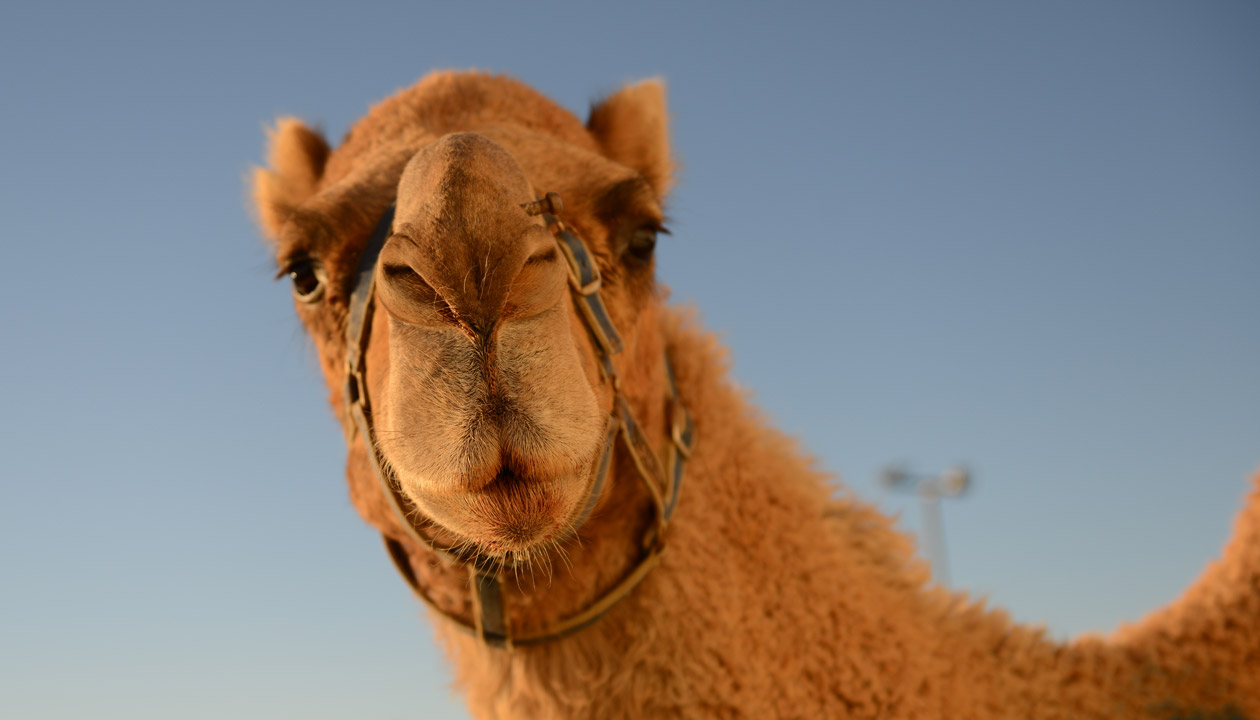Starting out 20 years ago with a few locals sending wild camels down a dirt track, the annual Boulia Camel Races has grown into a huge, official spectacle overseen by Racing Queensland.
Story + Photos Ken Eastwood
Mick Johnstone is extremely nervous. His heart is pounding, hands are sweaty, and he’s actually dry-retching. It isn’t a new feeling for Mick. For the past 10 years the Charleville council worker been a camel handler for champion camel jockey and trainer Glenda Sutton, and he’s joined her again on the outback Queensland camel-racing circuit, through Bedourie, Boulia, Winton and Tara. Today, at Boulia, Mick is leading Glenda’s gun four-year-old camel Hajime, a tall, dark and handsome beast, for the first race of the day. Pint-sized Glenda, in her blue and gold racing colours, sits atop the towering thing, which broke an Australian record the previous weekend, running 400m in 32.43 seconds.
Everyone involved in the sport says that handling the camels is the most dangerous job. Rather than a gated start, like horseracing, the camels are held by the handlers until the gun goes off. Then the handlers somehow scoot out of the way of the forest of tall legs. The jockeys have no reins to help steer, and the camels can be unpredictable or cantankerous, going backwards, sideways, trying to race back down the track before the gun, or even sitting down.
“Last year I got hooked up in the barriers and dragged under,” Mick says. “Once the camels see the barriers they build and build and build because they know they’re about to start running. I’ve been carried halfway up the track just to try to stop one camel from running.”
Tiny clouds of red dust float up from camel hooves as they walk down the track to the start of this first race. In most camel racing carnivals, 400 or 600m events are the order of the day, but at Boulia, events include 1000m races and the cup final is the longest camel race in Australia – an exciting 1500m event, nicknamed the Melbourne Cup of camel racing.
Before each race, the handlers lead the camels – with the jockey on a small saddle behind the hump that looks like he or she is almost falling off the animal’s rear end – from the finish line to the starting barriers. The camels then supposedly know where to go. “Basically they’re running back to home,” Glenda says. “You can’t slow them down, you can’t steer. You’re monitoring – are they slowing down? Talking to them. Body control, using your legs and whip. You’re trying to take all the shock in your own legs – you don’t want to be rolling around up there. But with the young ones, you’re hoping to just get through safely.”
“At the starts I think we all become Christians – we pray so hard,” says local part-time camel trainer Dannileah ‘Danni’ Stewart. She got kicked in the chest by a camel at last year’s races, breaking a rib. “Some people call them wild, but they just want to run.” Danni holds down several jobs in Boulia, working in the council offices and after that, cleaning all six council buildings, but in her spare time enjoys working with and training her three camels. “I love this,” she says. “It’s a break away from work.”
This story excerpt is from Issue #127
Outback Magazine: Oct/Nov 2019










